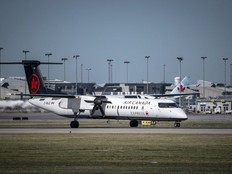CRA plans to expand automatic tax filing program, but not everyone is enthusiastic
Monday's Fall Economic Statement promised to explore expanding CRA's SimpleFile pilot from low-income Canadians to middle-class

Article content
OTTAWA — It’s like hiring the fox to guard the henhouse.
That’s how some experts describe plans by the federal government to expand the Canada Revenue Agency’s (CRA) SimpleFile automatic tax filing pilot, detailed in this week’s Fall Economic Statement.
“Nearly 20% of Canadians with an income below $20,000 do not file a tax return,” read a passage published in the FES, which was released on Monday.
“They are therefore not receiving many significant federal benefits they are eligible for, such as the Canada Child Benefit and the GST Credit.”
The FES says filing their taxes for them, and therefore unlocking previously-unavailable benefits, will help low-income Canadians weather the ongoing cost-of-living crisis.
RECOMMENDED VIDEO
First announced in the 2024 federal budget, the government’s automatic tax filing pilot was presented as an option to 500,000 low-income Canadians, with plans to expand eligibility to two million taxpayers nationwide by 2025.
“In February 2024, the CRA increased the number of previously planned, initial invitations for SimpleFile by phone from 700,000 to over 1.5 million Canadians,” the FES read, adding that as of November 93% of those invited filed a return and received their share of $3 billion in credits and benefits.
Monday’s FES promised legislation would expand the program, with plans to introduce it for middle-class Canadians with “simple tax satiations.”
But not everybody is enthusiastic.
“Trusting the CRA to do your tax return is like trusting your dog to protect your burger,” Franco Terrazzano, federal director of the Canadian Taxpayers Federation, told the Toronto Sun.
Terrazzano said enlisting CRA to act as both tax collector and return preparer represents a serious conflict of interest.
“Taxpayers want to keep as much of their own money as possible, while the CRA wants to squeeze as much money as it can from taxpayers,” he said.
“The government is more than $1 trillion in debt, it’s broke. If the CRA takes over tax filing, expect your tax bill to go up.”
Expanding the CRA’s mandate, Terrazzano said, means expanding the CRA itself — described as a bloated, expensive mess.
“When the CRA inevitably messes up your tax return and overbills you, good luck getting them on the phone,” he said.
With Canada’s federal public service larger than it’s ever been, many Canadians want the federal bureaucracy put on a crash diet, according to polling released last summer.
While Canada’s population grew by a little over 17% between 2010 and 2023, the public service grew by 26% — reaching a historic high of 367,772 employees.
RECOMMENDED VIDEO
The largest share of those workers are employed by CRA, which boasted employment rolls of 59,155 public servants in 2024.
That’s compared to Employment and Social Development Canada, which has 39,089 employees, and the Department of National Defence, which employs 28,740 public servants.













Postmedia is committed to maintaining a lively but civil forum for discussion. Please keep comments relevant and respectful. Comments may take up to an hour to appear on the site. You will receive an email if there is a reply to your comment, an update to a thread you follow or if a user you follow comments. Visit our Community Guidelines for more information.